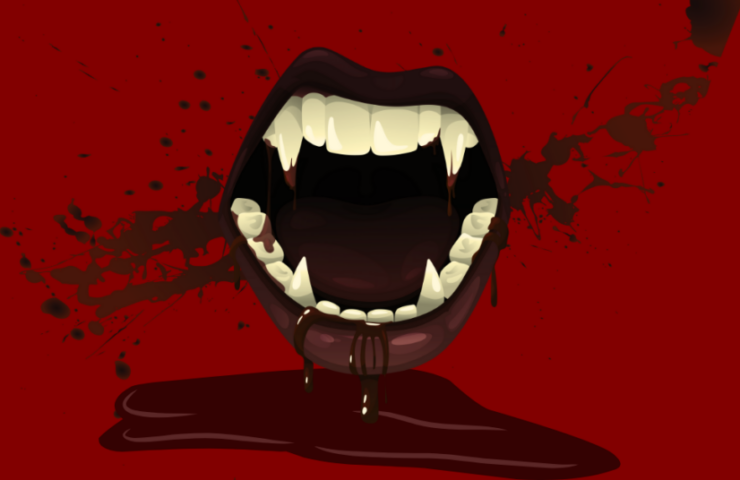“This time there could be no error, for the man was close to me, and I could see him over my shoulder. But there was no reflection of him in the mirror! The whole room behind me was displayed; but there was no sign of a man in it, except myself.” When the Count saw my face, his eyes blazed with a sort of demoniac fury, and he suddenly made a grab at my throat,” Bram Stroker wrote in Dracula, Chapter 2.
The earliest known reference to the term vampire is “Upir.” Vampires and mystical creatures have captivated humans since ancient times. Mesopotamians, Hebrews, Ancient Greeks, Russians and Romans told tales of demons and spirits evolved into modern vampires.
Eventually, these tales became concentrated in early 18th-century Southeastern Europe. By 1734, the word “vampire” had entered the English language.
The Birth Of The Modern Vampire
In the summer of 1816, Lord Byron stayed with his personal physician John Polidori, his friend Percy Bysshe Shelley, Shelley’s mistress Mary Shelley and Mary’s stepsister Claire Clairmont.
One cold, rainy night, Byron suggested they write ghost stories as a contest. While Mary Shelley began her novel Frankenstein (1818) at only 18 years old, Polidori wrote a narrative where the undead villain is a proud and handsome gentleman, fatal to women. He’s interested only in virgins. He sucks their necks; they die. He lives.
And so, the modern vampire was born.
Polidori gained immense recognition in England and France. His tale inspired many plays, operas and operettas, along with novels such as James Malcom Rymer’s Varney the Vampire in 1845.
Then, Stoker changed the course of literature and the arts forever.
A New Chapter For The Modern Vampire
Stoker, a civil servant, began his career in Dublin theater.
In 1878, he moved to London to become the business manager of the Lyceum Theater, owned by the actor Henry Irving. Stoker also had an interest in thrillers, writing stories on the side about a curse-wielding mummy and a giant homicidal worm.
His fourth novel, Dracula (1897), suddenly became such a sensation. In the first English Dracula play by Hamilton Deane in 1924, ladies were carried, fainting, from the theater. Many films and novels followed, such as F.W. Murnau’s silent Nosferatu (1922) and Tod Browning’s Dracula (1931).
Centuries later, modern-day vampire stories like Stephenie Meyer’s Twilight have continued to captivate audiences, generating billions of dollars and selling forty-two million copies worldwide since 2005.
Why The Tales Live On
One of the reasons why vampires and folklore have captivated people for centuries lies in a complex psychological truth.
Dracula represents a mix of primal fears, forbidden desires and powerful allure: his immortality, supernatural abilities and “bad boy” archetype tap into human anxieties and fantasies about power, control and hidden identities. As these themes continue to resonate with our deepest fears and desires, the figure of the vampire becomes a safe-haven to indulge in hidden desires.
This blend of mystery, danger and allure has allowed the rise of horror movies, gothic literature and vampire tales for centuries offering a mirror into the darker, hidden facets of the human psyche serving as a struggle with mortality, marking it as a timeless figure which continues to haunt dreams.





Recent Comments